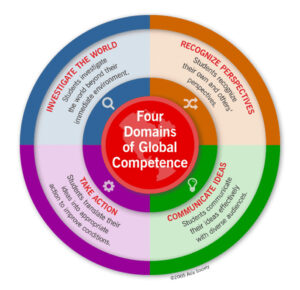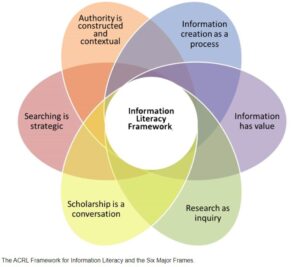Mathematics Meets Digital Literacy
This is because the battle against fake news and its effects starts with good digital literacy which is crucial in the current world where we have access to a lot of information. Integrating digital literacy into secondary mathematics education – my major – is a great way to help students to develop their critical thinking and analytical skills. This integration is in harmony with curriculum objectives and the goals identified in the National Council of Teachers of English (NCTE) framework.

Integrating Digital Literacy into Secondary Mathematics
Teaching students to effectively locate, assess, organize, create and communicate information using technology is called digital literacy in math classes. It also helps them to understand the mathematics that they are learning and at the same time, makes them ready to navigate the world’s information system critically. As Caulfield (2017) stated, students should learn the habit of lateral reading, which is checking other sources in order to verify the credibility of a source rather than relying on the information available on the website. In mathematics, this tactic could be expanded to fact checking statistics, so students do not get misled by the wrong or manipulated data.
Curriculum Connections
Digital literacy can be integrated into the math curriculum in the following ways:

Data Interpretation:
Students can gather actual data, analyze it with the help of digital tools, and make predictions which are in line with the given situation, thus making use of mathematical principles in real life situations. The ACRL Framework (Association of College & Research Libraries, 2016) emphasizes that among the competencies, students must be able to analyze and criticize data, and comprehend how numbers and statistics can be used to mislead people.
-
Critical Evaluation:
It is important to teach students how to assess credibility of data sources so as to help them critical think, a skill they can use in any subject. For instance, students can use the ‘Smell Test’ approach by Schulten and Brown (2017) where they analyze the sources of statistical claims, search for biases and learn how to avoid misleading visual representations of data.

-
Problem-Solving with Technology:
Using mathematical software to solve complex problems increases technological proficiency and mathematical understanding. This aligns with Caulfield (2017) urging people to use digital tools like reverse image search and fact-checking databases to verify claims, techniques that can also be used when interpreting data in a math setting.
Aligning with the NCTE Framework
In step with the NCTE Framework The NCTE Framework for 21st Century Curriculum and Assessment also focuses on the development of critical thinking, problem solving and communication skills. Through the integration of digital literacy into mathematics, educators can be able to:
-
Improve Analytical Skills:
This encourages students to reason about data and mathematical constructions, as required by the framework on critical thinking.
-
Improve Collaborative Learning:
Share ideas and work on group projects using digital platforms, thus building up students’ communication and collaboration skills.
-
Improve Information Literacy:
Help students to identify the trustworthy sources of mathematical information, fulfilling the goal of the framework to educate the informed citizens. This is in line with the ACRL (2016) which stated that students must be able to make an assessment of information on the basis of context, credibility, and authority.
Conclusion
Including digital literacy in secondary mathematics not only enhances students’ mathematical learning but also prepares them for crucial skills to think and solve problems critically in the digital environment. As pointed out by Caulfield (2017), digital literacy education should not be limited to teaching students how to identify ‘fake news’ but should help them learn how to verify information systematically.
Do you think this approach which is in line with curriculum goals and the NCTE framework can produce a population that can think critically and analyze information in a increasingly complex world?
References
- Association of College & Research Libraries. (2016). Framework for Information Literacy for Higher Education. American Library Association. https://www.ala.org/acrl/standards/ilframework
- Caulfield, M. (2017). Web literacy for student fact-checkers and other people who care about facts. PressBooks.
- Schulten, K., & Brown, A. C. (2017). The smell test: Educators can counter fake news with information literacy. School Library Journal. https://www.slj.com/story/the-smell-test-educators-can-counter-fake-news-with-information-literacy-heres-how
Oh I love this example Mort! I definitely agree that it can help out with students mathematic academics.
I hope so. Thanks Carys!
This is a really cool connection! I never would have thought of teaching digital literacy through mathematics. Great job!
Love the connection; very creative. Math is so vast aha.